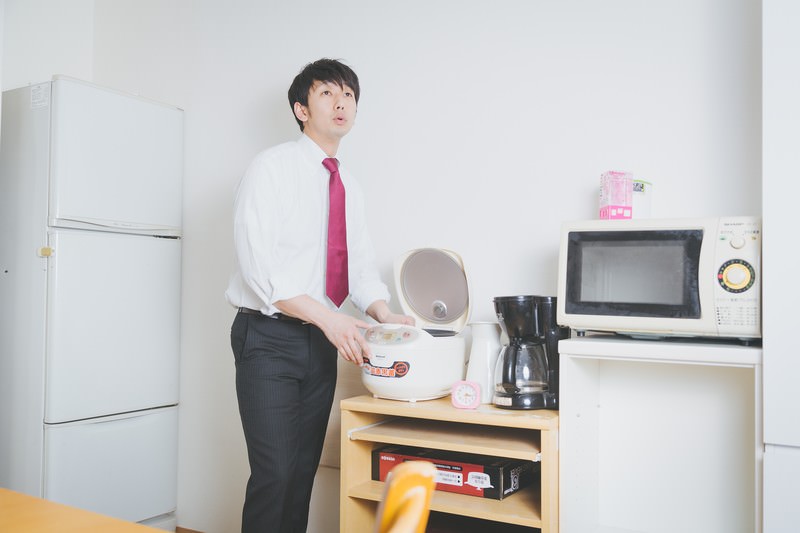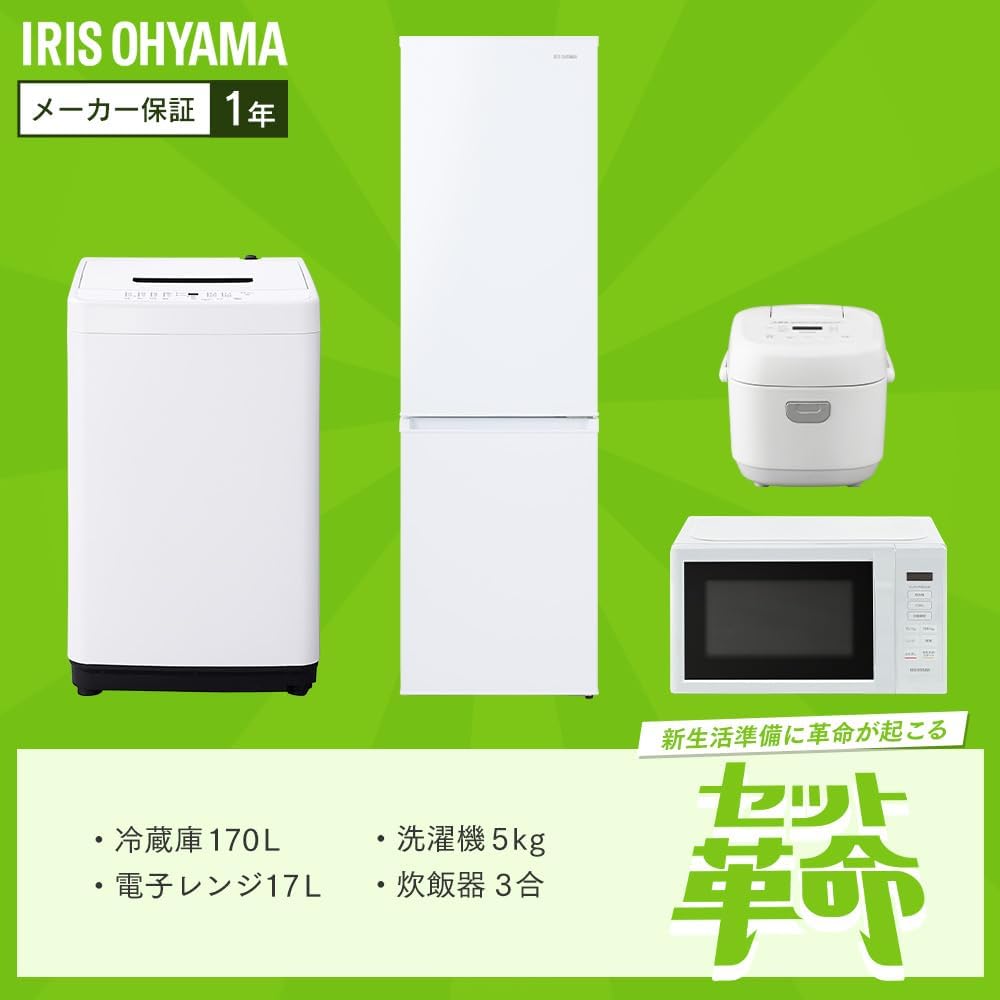Moving into a new apartment in Japan can be a surprise — even beautiful, modern places often come completely unfurnished. No fridge, no washing machine, not even light fixtures or curtains.
If you’re from a country where furnished rentals are the norm, it can be confusing to realize you’ll need to buy everything from scratch. But don’t worry — this guide explains how people in Japan typically get their home appliances, what’s worth buying new or used, and why bringing items from abroad is often not worth the trouble.
By the end, you’ll know exactly how to furnish your home efficiently — like locals do.

Why You Need to Buy Your Own Appliances in Japan
In Japan, landlords expect tenants to leave the property exactly as it was before moving in — a concept known as genjō-fukki (現状復帰). Because of this, most apartments are rented completely empty.
Here’s what’s usually not included:
- Refrigerator
- Washing machine
- Microwave and rice cooker
- Air conditioner (sometimes attached)
- Curtains and light fixtures
For many expats, this is one of the biggest surprises after signing a lease — realizing that even the basics, like a ceiling light, need to be purchased separately.
On the other hand, this “empty apartment” system gives you full freedom to choose appliances that fit your lifestyle. You’re not stuck with old or inefficient machines left by a previous tenant.
Most Japanese renters buy their appliances soon after signing a lease—often scheduling delivery for move-in day. To make it easy, many stores sell “new life sets” (新生活セット): affordable bundles with single-person essentials like a fridge, washing machine, and microwave. Many people pick these sets when they leave home for the first time for university or a new job. They start with the basics, then upgrade or add items gradually as their lifestyle and budget grow.

💡 Tip: If you’re new to Japan, this kind of starter set is a practical way to begin — it’s affordable, convenient, and avoids the hassle of buying each appliance separately.
Should You Bring Appliances from Abroad? (Usually, No)
It might sound practical to ship your existing appliances to Japan — especially if they’re new or high-end. But in reality, it’s almost never worth it.
Here’s why:
⚡ Voltage and plug differences
Japan uses 100V, while many countries use 220–240V or 110–120V.
This means that most foreign appliances won’t work properly, or worse — could be damaged. Step-up or step-down transformers exist, but they’re heavy and consume a lot of power.
Plug shapes also differ (Type A in Japan), so adapters are often required.
📦 Shipping and customs
Shipping large appliances internationally is costly and time-consuming.
You’ll also have to pay customs duties and import taxes, and there’s always a risk of damage in transit. Even if they arrive safely, after-sales service and warranties usually don’t apply in Japan.
🧾 Compatibility and convenience
Even well-known brands like Sony, Panasonic, or Hitachi design models specifically for Japan — with different voltage, plugs, and even menu settings written in Japanese.
Many imported models also lack repair parts or authorized service centers.
In short, most expats find it much easier to sell or donate their old appliances before moving and buy new or used ones in Japan instead.
(For safe disposal or donation options, see our guide on appliance disposal in Japan.)
Where to Buy Home Appliances in Japan
Once you decide to buy locally, the next question is — where?
Japan has a wide range of options, from massive electronics stores to secondhand shops and online marketplaces. Each has its pros and cons depending on your budget, Japanese level, and length of stay.
🏬 Big Electronics Stores
Japan’s large electronics retailers — Bic Camera, Yodobashi Camera, and Yamada Denki — are the most trusted option for many locals.
Their biggest strength is that you can see and touch the products in person before buying, and ask detailed questions to knowledgeable staff (though communication is usually in Japanese only).
They also offer a wide range of optional services, such as home delivery, installation, and even recycling of old appliances — sometimes free during campaigns.
Prices are competitive, though often slightly higher than online stores. However, during seasonal sales, you can sometimes find deep discounts that rival e-commerce sites.
💡 Who it’s best for:
Those who value hands-on shopping and reliable service, even if it costs a little more.
It’s ideal if you want peace of mind — knowing everything from delivery to installation will be handled smoothly.
💻 Online Stores
If you already know exactly what you want, buying online can be the easiest option — especially for busy professionals.
You can order everything from home, and if your apartment has a delivery locker (宅配ボックス), it’s even more convenient.
Prices vary depending on the platform and the seller. On Amazon Japan, most items are same or cheaper than in-store, while some can be surprisingly expensive — so compare before you buy.
If you can read some Japanese, check kakaku.com (価格.com), a popular comparison site that shows the lowest price across multiple retailers.
One important difference from countries like the U.S.: packages are never left at your doorstep.
In Japan, all deliveries are hand-delivered. If you’re not home and don’t have a delivery box, the courier will take the package back and leave a missed-delivery slip so you can reschedule.
💡 Who it’s best for:
Perfect for people who know what they want and prefer convenience over browsing in stores — especially those with limited time or with a secure delivery setup.
🔄 Secondhand and Recycle Shops
Buying used is extremely common in Japan — many people sell lightly used items when they move or upgrade. You can find reliable secondhand appliances at stores like Hard Off or Off House.
This culture reflects the Japanese sense of “mottainai” — not wasting things. Because people take care of their belongings, used items are often in excellent condition, oftentimes even with their original boxes and manuals.
If you prefer buying online, check Jimoty (ジモティー) for local deals or Mercari (メルカリ), Japan’s biggest resale app (use code KTEZKC for ¥500 off).
Craigslist Japan exists but is rarely used by locals.
💡 Best for: Anyone who wants quality appliances for less — and doesn’t mind giving pre-loved items a new life.
📦 Appliance Rental Services
If you’re staying in Japan for a short period — say, a few months to two years — renting appliances can be a smart and stress-free option.
Most rental companies offer affordable packages that include a fridge, washing machine, and microwave, with delivery, installation, and pickup all handled for you.
Plans typically start from one month, making them perfect for students, interns, or short-term employees who don’t want to buy everything upfront.
You’ll avoid high initial costs, and when you move out, the company collects everything — no recycling hassle, no heavy lifting.
One of the most popular rental services is Kashite.com (かしてドットコム). It doesn’t require any background screening, so foreigners can apply easily. The company offers one of Japan’s widest selections — not only appliances but also furniture and even bicycles. Delivery, setup, repairs, and replacements are completely free, and you can choose freely between new or used items. Payment is flexible, too — by credit card, cash on delivery, or bank transfer (for companies).
Rental periods range from 30 days to 4 years, and a set of four used appliances (TV, washing machine, fridge, and microwave) costs about ¥57,750 per year — roughly ¥158 per day. For short stays, that’s far cheaper and easier than buying and later disposing of everything.
💡 Cost comparison: Renting is usually cheaper for stays under two years. Beyond that, purchasing your own appliances becomes more economical.
💡 Best for: Short-term residents or anyone who wants a fully equipped home without the stress of buying, moving, or recycling appliances later.
Must-Try Japanese Appliances That Make Life Easier
Once your home is set up, you’ll quickly notice that some Japanese appliances are surprisingly advanced — designed to save both time and effort in daily life.
Here are a few worth trying:
- Washlet (ウォシュレット): Japan’s famous high-tech toilet with heated seats and built-in bidet.
- Rice Cooker (炊飯器): Produces perfect rice every time — many models also cook porridge, bread, or even cake.
- Drum-Style Washer Dryer (ドラム式洗濯乾燥機): Unlike in the U.S., washing and drying are done in a single machine — just press one button and you’re done.
- Countertop Dishwasher (食器洗い乾燥機): Compact and portable, ideal for small apartments without built-in dishwashers.
Want to explore more?
👉 Read our full guide: Must-Try Japanese Appliances That Make Life Easier
🏁 Summary: Setting Up Your Home in Japan
Furnishing a home in Japan may feel overwhelming at first — especially when you realize that most apartments come completely empty.
But once you understand how locals buy (or rent) their appliances, it becomes surprisingly manageable.
Here’s a quick recap:
- Don’t ship large appliances from abroad — they often won’t work in Japan.
- Choose where to buy based on your budget, Japanese level, and length of stay.
- Compare options: big stores for service, online for convenience, recycle shops for bargains, and rentals for short stays.
- Keep receipts for recycling and warranty purposes.


